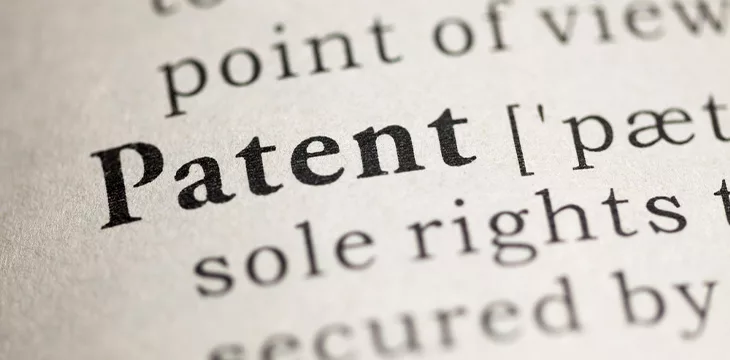|
Getting your Trinity Audio player ready...
|
The work of nChain and in particular its chief scientist Dr. Craig Wright was the subject of a Forbes cover story this week which canvassed the decades-long career of Wright and most importantly the vast digital asset patent portfolio he has built with nChain.
The premise of the article is this: it doesn’t matter whether you or anyone else thinks that Dr. Wright is Satoshi, because the blockchain-related intellectual property being developed by Wright and nChain is going to dominate the industry regardless.
It may not matter if Craig Wright created Bitcoin. The real question is whether the nearly 4,000 patents he controls or has pending will force computer programmers around the world to stop using open-source software as they now do—or pay for the privilege. https://t.co/H0kMYBYPyD
— Forbes (@Forbes) July 12, 2023
It’s true: Forbes reports that nChain boasts 800 patents that have already been granted and 3,000 pending across 46 jurisdictions. The patents are primarily concerned with blockchain applications, and according to Forbes “would affect everything from the $1 trillion cryptocurrency market to corporate implementations built by some of the largest companies in the world.”
The article provides much of the detail that’s been missing from mainstream coverage of Dr. Wright. Most of this reporting has focused on lawsuits Dr. Wright is involved with and which, if any, are likely to reveal something new about his invention of Bitcoin or more superficially, the trove of early bitcoins that most assume Satoshi Nakamoto would be in possession of.
That interest is understandable, but it ignores the much bigger story picked up on by Forbes: that patents developed by and granted to Dr. Wright or companies he is affiliated with already cover much of the digital asset industry as it exists today. If there’s a Satoshi stash at all, it’s this trove of IP—and it’s unambiguously the product of Dr. Wright.
That context (criminally underreported in comparison to what salacious details get picked up from Dr. Wright’s various legal battles) is critical to understanding the digital asset industry as it exists today.
It’s also critical for understanding why Dr. Wright’s critics—usually anonymous—spend so much oxygen trying to convince the world that Dr. Wright is either irrelevant or hugely dangerous to the industry or a paradoxical mixture of both. So successful has this cyber-bulling campaign been that those who haven’t been paying attention to the work of nChain might be surprised to read Forbes’ reporting. It’s not an accident, but a deliberate attempt to ignore or discredit the power nChain now holds over the future of the Silicon Valley based Web2 Big Tech industry.
Follow the trolls
In fact, the Forbes article itself contains the perfect demonstration of this phenomenon.
It quotes an English lawyer name David Pearce, who says of nChain’s patent empire that “a lot of these patents are, for better or worse, valid” and that many were “validly granted by the European Patent Office, which is generally considered one of the toughest in the world.”
Pearce should know, because as the Forbes story reveals, he’s being paid by career troll Arthur Van Pelt to try and strike out as many of nChain’s patents as possible. Van Pelt is a long-time harasser of Dr. Wright; based in the Netherlands he spends an improbable amount of time following Dr. Wright’s every move and providing incendiary commentary via social media. His first account was banned by Twitter at the beginning of 2022 and has been posting from an alternate ever since.
Pearce knows nChain’s patents are valid because despite this campaign, they’ve managed to object to just three of the 800 patents already granted to nChain. Presumably, Van Pelt’s relentless social media trolling picks up the slack.
Herein lies a bigger story revealed by Forbes’ research that even its own writer has missed. Why is Van Pelt, who claims to be an independent crypto ‘journalist,’ spending more than 40 hours a week following Dr. Wright and attempting to discredit the work of him and nChain?
If his activity was confined to social media posting, one might be tempted to view Van Pelt as one of the many faceless, deranged Twitter accounts polluting the infosphere. But the Forbes piece confirms that for Van Pelt, it’s much more than that. He’s paying lawyers to pore over hundreds of already-granted nChain patents to see what they can challenge. That they’ve only managed to challenge three of them makes this project a failure, but it still begs the question: why is Van Pelt doing this? On whose behalf? Deranged as he may appear, Van Pelt is not going out of pocket to have lawyers challenge patents at a measly 0.4% success rate for his own entertainment.
Given what Forbes said about the nChain patent portfolio—that it will affect virtually the entire industry—it’s fairly easy to speculate who might be directing such attacks. Anyone with a vested interest in the legacy industry players would be a good starting point, because sooner or later they will be forced to choose between paying license fees to nChain in order to use its patents or closing up shop. Their only hope of avoiding this outcome is to remove nChain and its chief scientist from the picture entirely—something they’ve tried earnestly to do.
Attacks on Dr. Wright have already proven to be commercially-motivated
That at least some of the attacks on Dr. Wright are commercially motivated has already been demonstrated beyond doubt.
Take for instance the Kleiman v Wright case, which saw a man in Florida sue Dr. Wright for billions of dollars in the hopes he could convince the court that Dr. Wright invented Bitcoin with Kleiman’s late brother. That failed, but most interesting was that Kleiman’s lawyers were caught on camera bragging about using sham lawsuits to attack the ‘crypto’ competitors of one of their other large clients, Ava Labs and Emin Gun Sirer. Dr. Wright was named as the chief competitor.
Or consider Magnus ‘Hodlonaut’ Granath, the pseudonymous Twitter user who relentlessly attacked Dr Wright on Twitter and called him scammer and a fraud, among other things. When Dr. Wright wrote to Granath warning of potential legal action if he didn’t take the tweets down, Granath sued him in Norway seeking a declaration that his tweets were not defamatory.
At trial, it the full extent of Granath’s campaign was revealed: it turns out Granath is a part of a private Telegram Group formed solely to harass the ‘leaders’ of those perceived as competitors to BTC, with Dr Wright chief among them. Granath himself has been a key figure in the coordinated trolling that gets levelled at anybody who becomes publicly identified with BSV blockchain or anything connected with Dr. Wright.
And how else would you explain the fact Jack Dorsey and his mobile payments company Block (NASDAQ: SQ) founded the Crypto Open Patent Alliance (COPA), which despite publicly presenting as a “non-profit community of like-minded people and companies formed to encourage the adoption and advancement of cryptocurrency technologies and remove patents as a barrier to growth and innovation” has done precisely nothing in the years since its founding except sue Dr. Wright in the U.K., seeking a declaration that he did not invent the white paper.
You’d think the likes of Dorsey and the companies that have joined COPA since its founding—notably including Mark Zuckerberg’s Meta (NASDAQ: META), embattled Coinbase and BTC hardliner Blockstream—would have more than enough to focus on without attacking Dr. Wright. But to COPA’s senior members, Dr. Wright represents the precise threat that caused Emin Gun Sirer to set loose his legal dogs on Dr. Wright and BSV. All depend on the continual flow of money into knockoffs of Bitcoin at the expense of the original (as represented by BSV blockchain)—and Dr. Wright is the original.
So pervasive is this campaign that even the Forbes story is tainted by it: the article talks as though Dr. Wright’s legal battles are somehow a targeted at open source software, but none of his cases take aim at open source software development at all.
It’s easy to see where the writer got this idea: the Bitcoin Legal Defense Fund, whose lawyer Jessica Jonas is quoted by Forbes as saying that one of the cases Dr. Wright is involved with—Tulip Trading Limited v Van der Laan and others—is somehow an attack on open-source software. The Legal Defense Fund is another organization established by Jack Dorsey, which like COPA holds itself out as a general-purpose resource for the digital asset industry, but also like COPA has in reality devoted all of its resources (funded by anonymous donations) to benefit whoever happens to find themselves in a legal fight with Dr. Wright—including the defendants in Tulip Trading.
The case isn’t about open source software at all, however. Tulip Trading, a company owned by Dr. Wright, is arguing that many blockchain projects—in that case BTC, BCH and BCHABC but in reality far more—are controlled by an identifiable group of developers with centralized power to change their blockchains. This centralized power means the developers owe legal duties to those using their blockchains and that these duties compel the developers to, for example, restore access to lost or stolen digital assets.
It’s an idea with considerable legal and academic support, and which challenges the myth of decentralization at precisely the same time that lawmakers and regulators are taking note of the same. This poses an existential risk to the biggest digital asset projects in the industry and explains why the Legal Defense Fund has taken up the case and is working so hard to convince the world it’s an attack on open source software development. It is not.
The war is already won
The point is not that all of the people and events are cynically attacking Dr. Wright in order to blunt the coming consequences of nChain’s massive patent portfolio. But there’s a lot of smoke, and based on the instances that have been confirmed as anti-competitive attacks on Dr. Wright, it’s clear there is some force hell bent on discrediting Dr. Wright’s work. Which of Dr. Wright’s many enemies this applies to remains to be seen, but they typically all have the same thing in common: they all depend heavily on the status quo in the industry and especially the decentralization fallacy. nChain’s amassed intellectual property threatens this status quo, as does Dr. Wright.
In that context, whether Dr. Wright has ‘proven’ his identity as Satoshi Nakamoto in court is irrelevant: he’s already in control of huge swathes of the industry whether the industry knows it yet or not.

 08-22-2025
08-22-2025 





